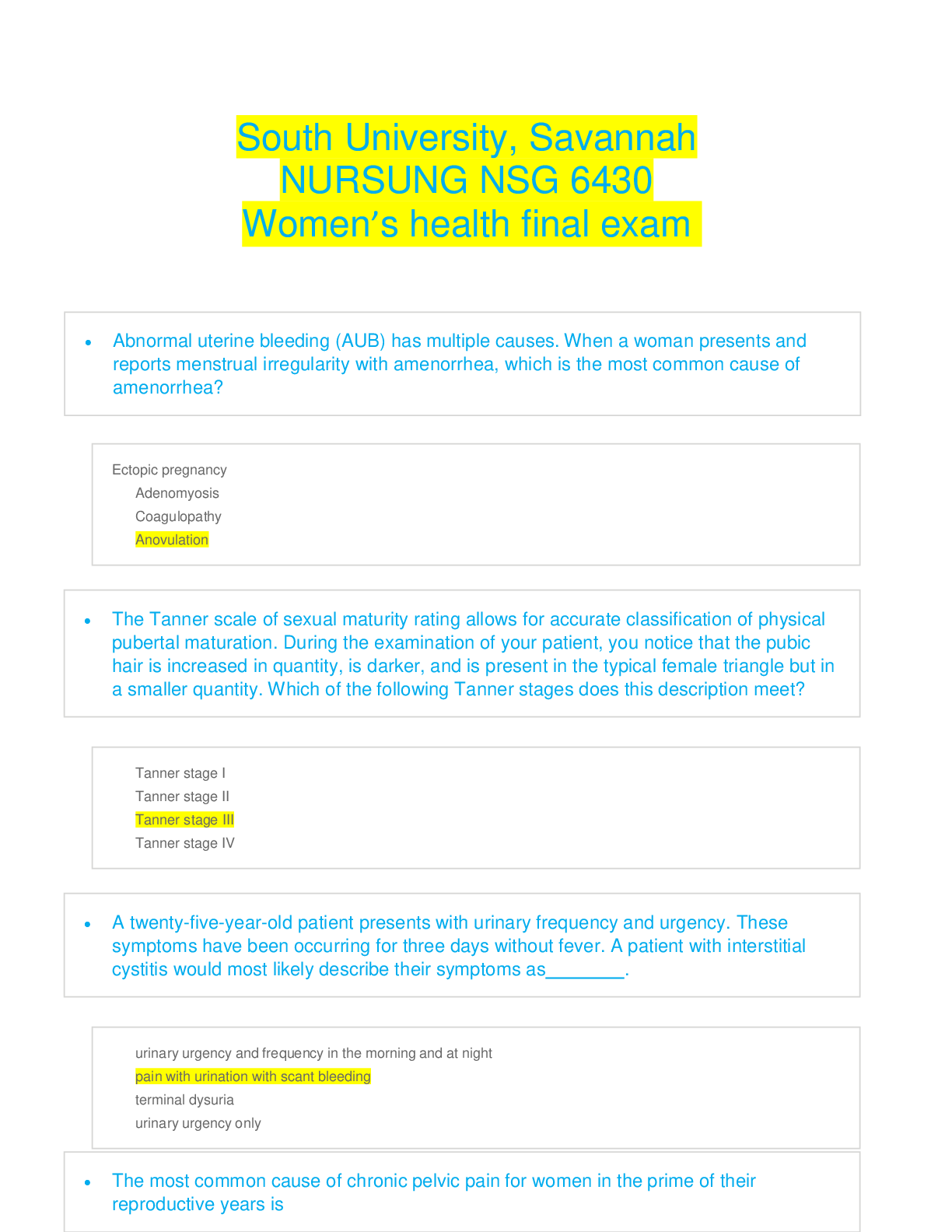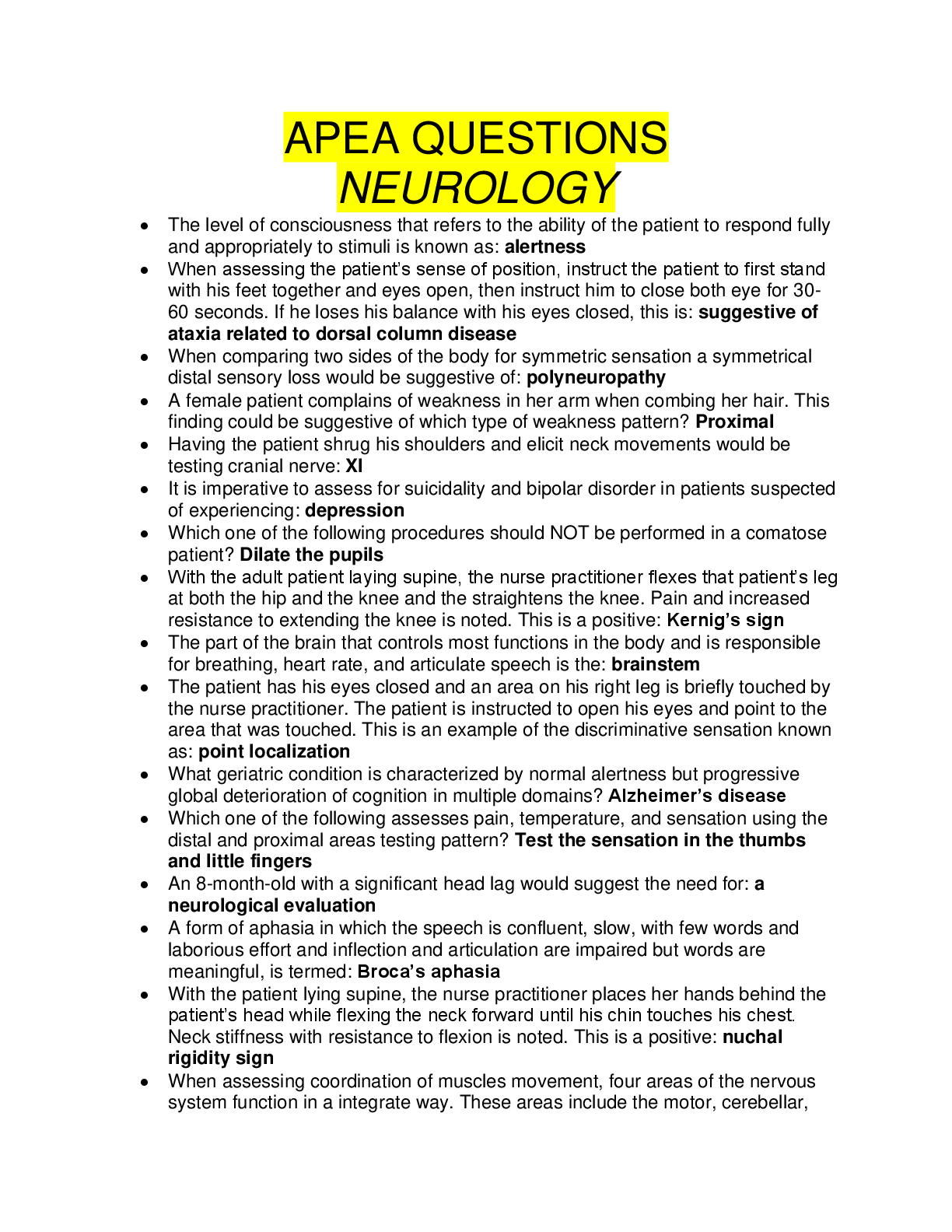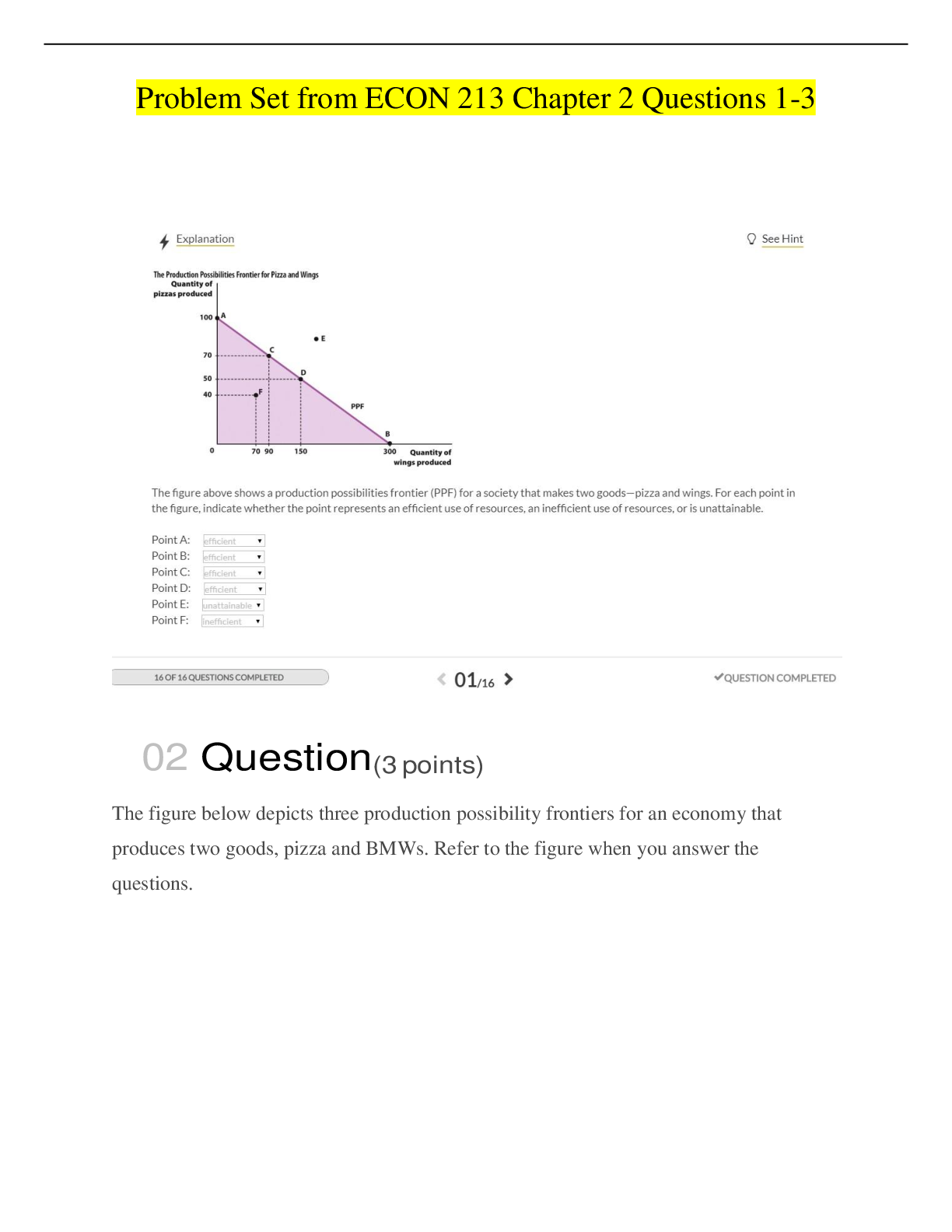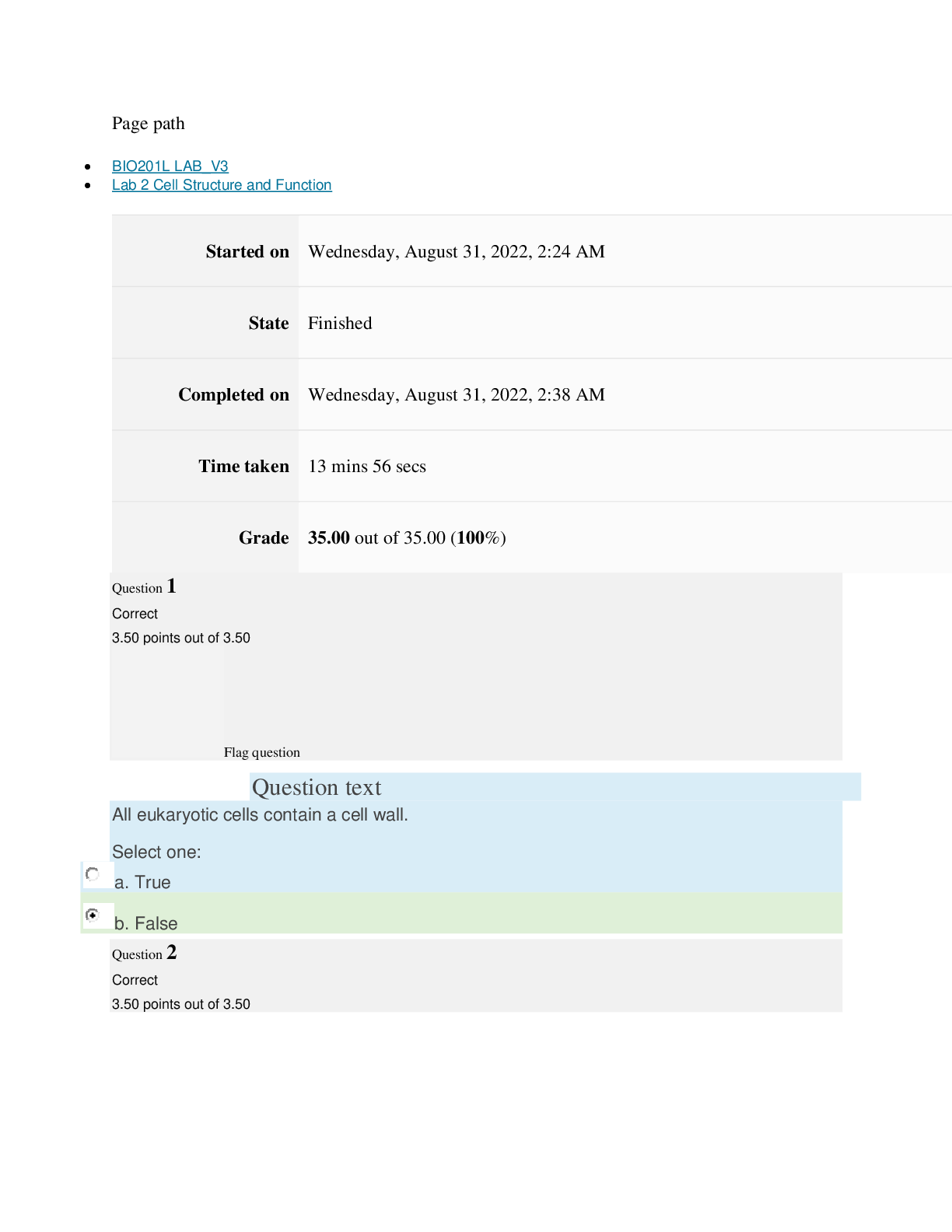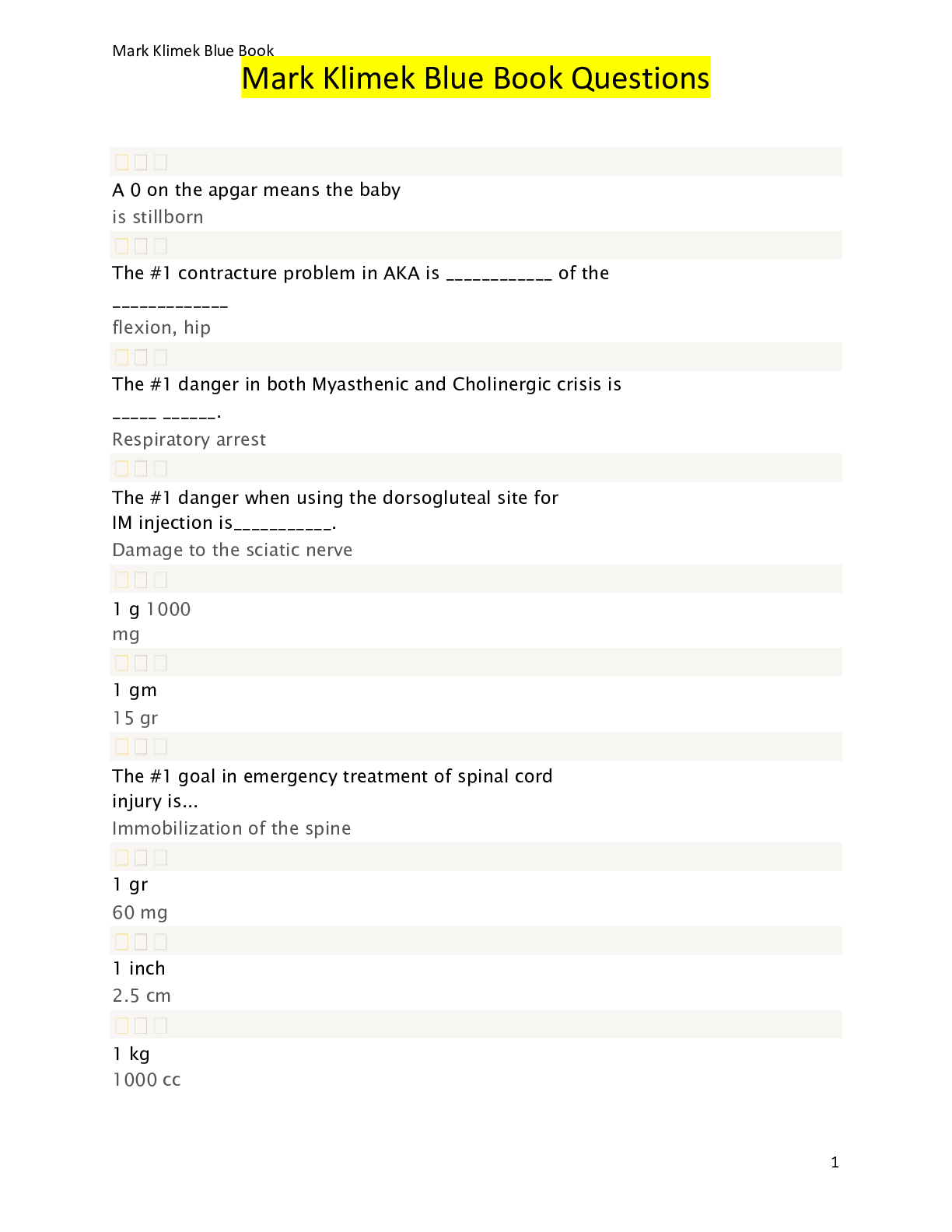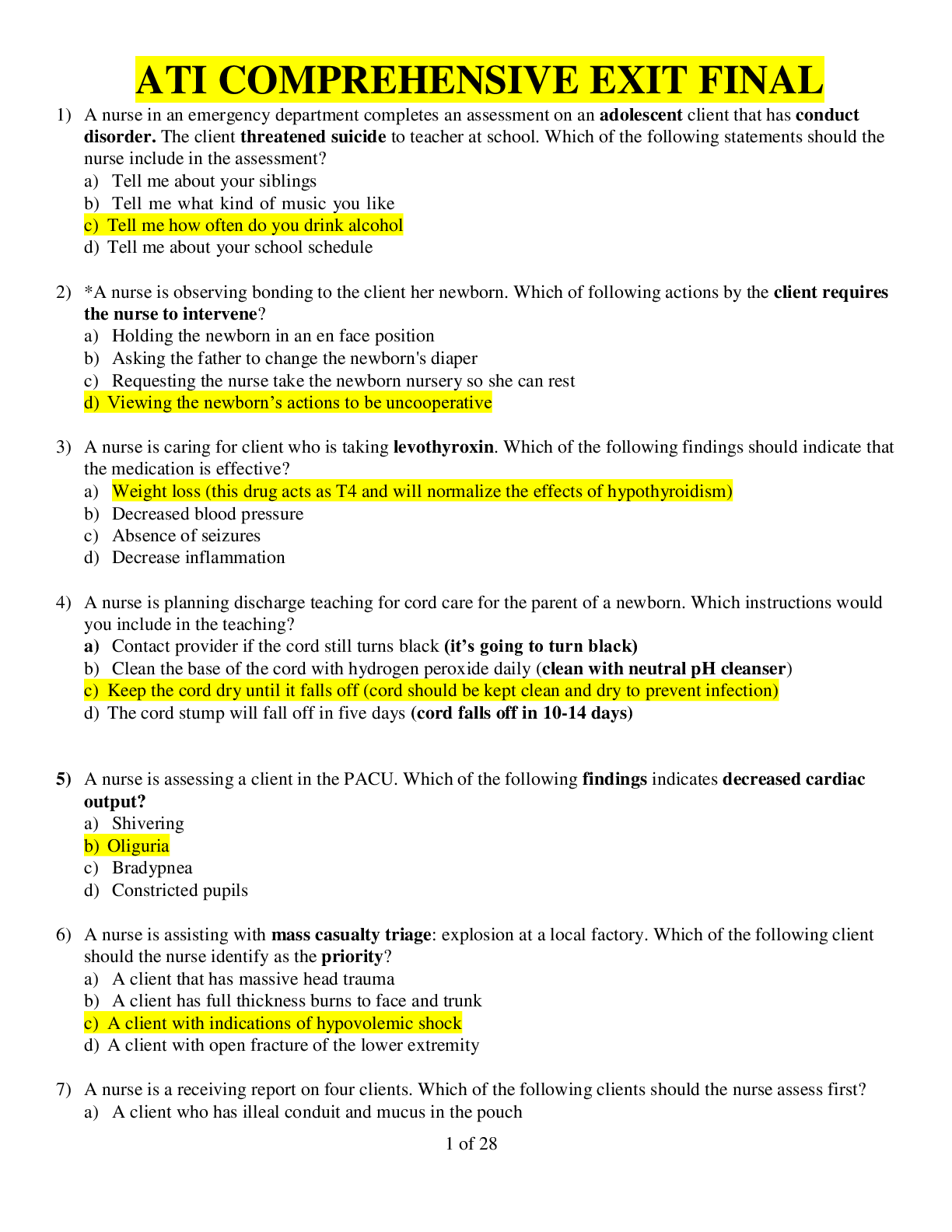*NURSING > QUESTIONS & ANSWERS > MENTAL HEALTH NURSING 2488/ NURS2488/ NURSING2488/ NURS 2488: MENTAL HEALTH NUR2488Chapter 24 Assess (All)
MENTAL HEALTH NURSING 2488/ NURS2488/ NURSING2488/ NURS 2488: MENTAL HEALTH NUR2488Chapter 24 Assessment of the Skin, Hair, and Nails: Rasmussen College (GRADED A)
Document Content and Description Below
Chapter 24: Assessment of the Skin, Hair, and Nails Chapter 24: Assessment of the Skin, Hair, and Nails Ignatavicius: Medical-Surgical Nursing, 8th Edition MULTIPLE CHOICE 1. While assessing a cli... ent, a nurse detects a bluish tinge to the client’s palms, soles, and mucous membranes. Which action should the nurse take next? a. Ask the client about current medications he or she is taking. b. Use pulse oximetry to assess the client’s oxygen saturation. c. Auscultate the client’s lung fields for adventitious sounds. d. Palpate the client’s bilateral radial and pedal pulses. 2. A nurse assesses a client who is admitted with inflamed soft-tissue folds around the nail plates. Which question should the nurse ask to elicit useful information about the possible condition? a. “What do you do for a living?” b. “Are your nails professionally manicured?” c. “Do you have diabetes mellitus?” d. “Have you had a recent fungal infection?” 3. A nurse assesses a client who has multiple areas of ecchymosis on both arms. Which question should the nurse ask first? a. “Are you using lotion on your skin?” b. “Do you have a family history of this?” c. “Do your arms itch?” d. “What medications are you taking?” 4. After teaching a client who expressed concern about a rash located beneath her breast, a nurse assesses the client’s understanding. Which statement indicates the client has a good understanding of this condition? a. “This rash is probably due to fluid overload.” b. “I need to wash this daily with antibacterial soap.” c. “I can use powder to keep this area dry.” d. “I will schedule a mammogram as soon as I can.” 5. A nurse assesses a client who has two skin lesions on his chest. Each lesion is the size of a nickel, flat, and darker in color than the client’s skin. How should the nurse document these lesions? a. Two 2-cm hyperpigmented patches b. Two 1-inch erythematous plaques c. Two 2-mm pigmented papules d. Two 1-inch moles 6. While assessing a client’s lower extremities, a nurse notices that one leg is pale and cooler to the touch. Which assessment should the nurse perform next? a. Ask about a family history of skin disorders. b. Palpate the client’s pedal pulses bilaterally. c. Check for the presence of Homans’ sign. d. Assess the client’s skin for adequate skin turgor. 7. A nurse cares for an older adult client who has a chronic skin disorder. The client states, “I have not been to church in several weeks because of the discoloration of my skin.” How should the nurse respond? a. “I will consult the chaplain to provide you with spiritual support.” b. “You do not need to go to church; God is everywhere.” c. “Tell me more about your concerns related to your skin.” d. “Religious people are nonjudgmental and will accept you.”. 8. A nurse assesses a client who has open lesions. Which action should the nurse take first? a. Put on gloves. b. Ask the client about his or her occupation. c. Assess the client’s pain. d. Obtain vital signs. 9. A nurse assesses a client who has a chronic skin disorder. Which finding indicates the client is effectively coping with the disorder? a. Clean hair and nails b. Poor eye contact c. Disheveled appearance d. Drapes a scarf over the face 10. A nurse assesses a client and identifies that the client has pallor conjunctivae. Which focused assessment should the nurse complete next? a. Partial thromboplastin time b. Hemoglobin and hematocrit c. Liver enzymes d. Basic metabolic panel 11. During skin inspection of a client, a nurse observes lesions with wavy borders that are widespread across the client’s chest. Which descriptors should the nurse use to document these observations? a. Clustered and annular b. Linear and circinate c. Diffuse and serpiginous d. Coalesced and circumscribed. 12. A nurse assesses an older adult client with the skin disorder shown below: How should the nurse document this finding? a. Petechiae b. Ecchymoses c. Actinic lentigo d. Senile angiomas 1. A nurse assesses an older adult’s skin. Which findings require immediate referral? (Select all that apply.) a. Excessive moisture under axilla b. Increased hair thinning c. Increased presence of fungal toenails d. Lesion with various colors e. Spider veins on legs f. Asymmetric 6-mm dark lesion on forehead 2. A nurse plans care for a client who has a wound that is not healing. Which focused assessments should the nurse complete to develop the client’s plan of care? (Select all that apply.) a. Height b. Allergies c. Alcohol use d. Prealbumin laboratory results e. Liver enzyme laboratory results 3. A nurse teaches a client to perform total skin self-examinations on a monthly basis. Which statements should the nurse include in this client’s teaching? (Select all that apply.) a. “Look for asymmetry of shape and irregular borders.” b. “Assess for color variation within each lesion.” c. “Examine the distribution of lesions over a section of the body.” d. “Monitor for edema or swelling of tissues.” e. “Focus your assessment on skin areas that itch.” [Show More]
Last updated: 2 years ago
Preview 1 out of 4 pages

Buy this document to get the full access instantly
Instant Download Access after purchase
Buy NowInstant download
We Accept:

Reviews( 0 )
$10.50
Can't find what you want? Try our AI powered Search
Document information
Connected school, study & course
About the document
Uploaded On
Apr 28, 2020
Number of pages
4
Written in
Additional information
This document has been written for:
Uploaded
Apr 28, 2020
Downloads
0
Views
94

